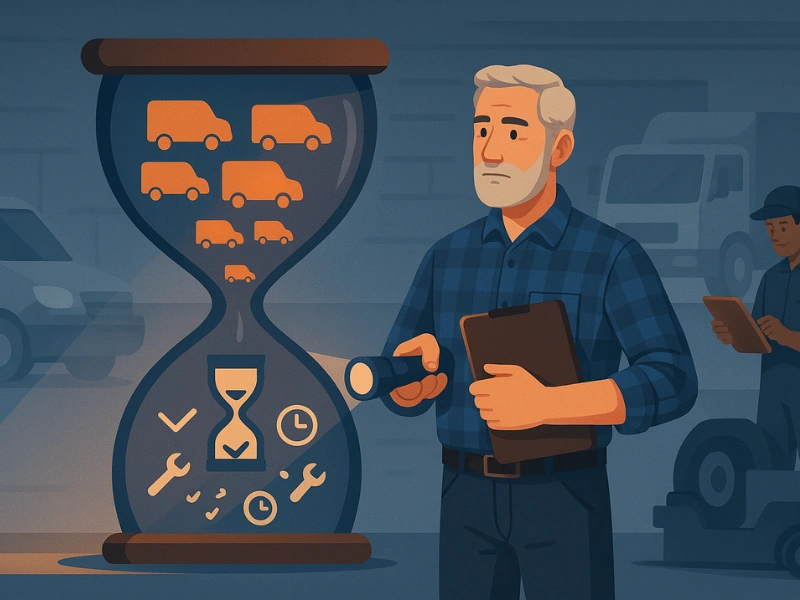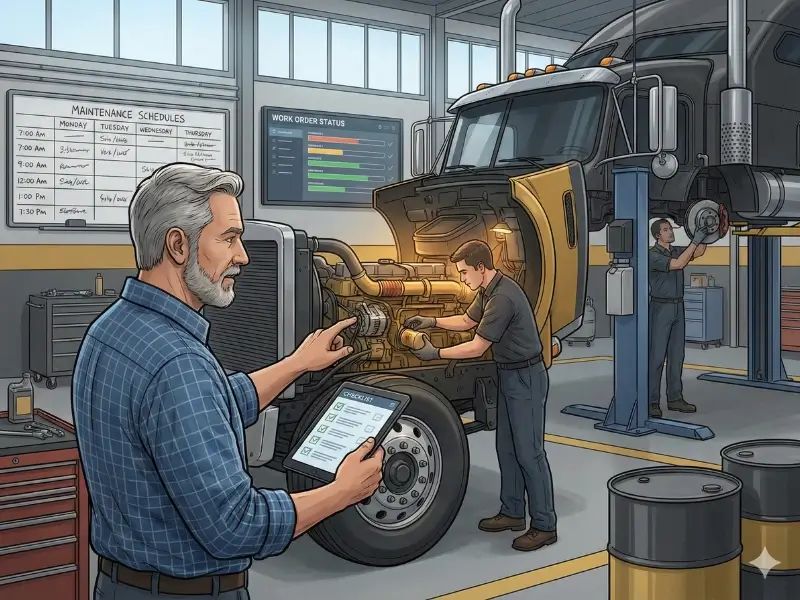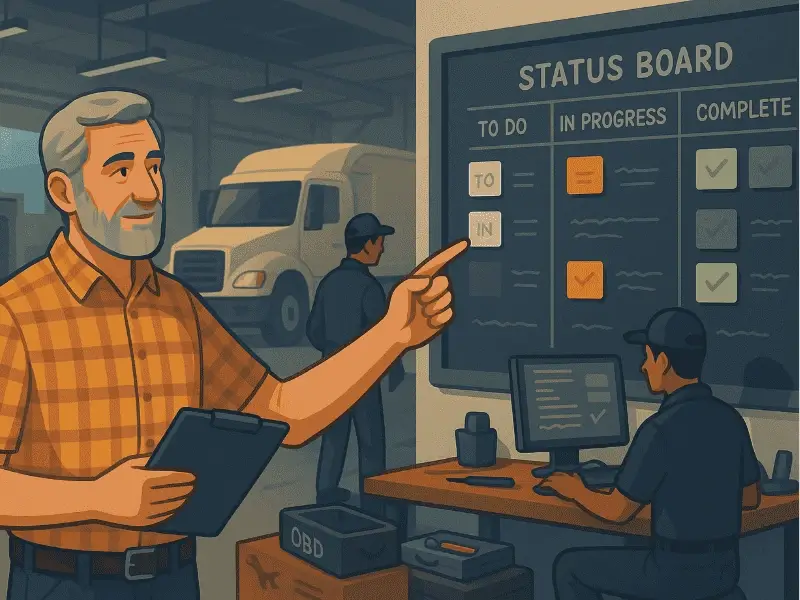Key Takeaways
- Free preventive maintenance software is great for small fleets or test runs.
- Open-source CMMS offers flexibility but requires IT expertise.
- Hidden costs, security gaps, and lack of scalability limit long-term use.
- Upgrading to affordable tools like Simply Fleet ensures reliability, insights, and support.
For small fleet operators and maintenance teams, the idea of free preventive maintenance software sounds like a dream. No monthly bills, no contracts- just a dashboard to schedule oil changes, inspections, and repairs. But while free tools can be a great starting point, they often come with tradeoffs that can affect performance, scalability, and long-term efficiency.
In this article, we’ll break down the pros and cons of free preventive maintenance software, explore options like open-source CMMS and free maintenance apps, and help you decide when it’s time to invest in a more complete, affordable fleet management tool like Simply Fleet.
What Is Free Preventive Maintenance Software?
Free preventive maintenance software helps track and schedule regular maintenance tasks for vehicles, equipment, or assets; without charging for licenses or subscriptions. These tools usually come in two forms:
- Open-Source CMMS (Computerized Maintenance Management System): You host and maintain it yourself, often for free, with optional customization.
- Freemium or Trial Versions: Commercial tools that offer a free plan or time-limited trial before requiring payment for premium features.
Whether you’re running a small delivery fleet or managing heavy-duty trucks, these tools can help reduce downtime and improve reliability; at least to an extent.
The Pros of Free Preventive Maintenance Software
Before dismissing free tools, it’s important to recognize their advantages. For small fleets, startups, or test runs, they can deliver genuine value.
Zero Upfront Cost
The biggest advantage is obvious- no license fees or long-term contracts. For small businesses, free maintenance apps can be a risk-free way to introduce preventive maintenance.
Great for Startups or Pilot Programs
If you’re still experimenting with your maintenance process, a free tool allows you to build workflows, test reporting, and see what works without committing to an expensive platform.
Customization with Open-Source CMMS
Open-source systems allow access to the source code. This means you can tailor modules, dashboards, and reports to your exact needs, provided you have IT resources.
Community Support
Open-source CMMS platforms often have active user communities that release plugins, updates, and fixes. This can help keep the tool evolving without relying on a single vendor.
Flexibility and Data Control
Hosting your own software ensures full control of your fleet data, especially useful for businesses that want to avoid third-party cloud storage.
The Cons of Free Preventive Maintenance Software
Free doesn’t always mean “no cost.” There are tradeoffs that can impact time, security, and overall productivity; especially as your operations grow.
Limited Features
Most free or freemium tools cap the number of vehicles, users, or work orders you can manage. Advanced features like analytics, GPS integration, or automated scheduling are often locked behind a paywall.
Lack of Scalability
Free maintenance software may work well for five vehicles but not for fifty. Once your operations expand, you’ll face performance lags, data limits, and the need to migrate to another tool.
No Dedicated Support
Unlike paid platforms, free tools rarely include customer support. When issues arise, you’re often left relying on community forums or DIY troubleshooting.
Hidden Costs
While the software may be free, hosting, setup, and ongoing maintenance consume time and internal resources. Open-source systems, for instance, require regular server updates and IT oversight.
Security and Compliance Risks
Many free systems lack strong encryption, user access controls, or audit trails. For regulated industries (like logistics or government contracting) this can be a dealbreaker.
Data Migration Challenges
If you eventually upgrade or switch vendors, migrating historical data can be complex. Incomplete exports or incompatible formats may cause downtime or data loss.
Stagnant Development
Some open-source projects lose active contributors over time. Without regular updates, the software becomes outdated and potentially vulnerable to bugs or security issues.
When Should You Upgrade to a Paid Solution?
At some point, free tools hit their ceiling. Here are signs it’s time to move beyond free preventive maintenance software:
- Your fleet has 10+ vehicles or assets requiring tracking.
- You need real-time data from telematics or GPS.
- You want to track fuel costs, driver behavior, or downtime trends.
- You’re spending too much time on manual data entry or troubleshooting.
- You require multi-user access, advanced reports, or API integrations.
Upgrading doesn’t have to mean overspending. Platforms like Simply Fleet offer affordable plans that scale with your business—starting with all the essentials and growing as you do.
Comparing Free vs. Paid Maintenance Software
Free software helps get started, but paid tools provide the reliability and insights needed to truly optimize fleet operations.
Download Your Free Fleet Maintenance Resources Now!
Why Simply Fleet Is the Smarter Alternative
Simply Fleet combines the affordability of free tools with the functionality of enterprise-grade software. It’s designed for real-world fleet teams that need:
- Preventive maintenance scheduling across multiple vehicles.
- Mobile-friendly access for drivers and mechanics.
- Real-time reporting on costs, downtime, and asset health.
- Automated alerts and digital work orders for zero missed service.
Unlike free systems, Simply Fleet doesn’t limit your growth. It scales with your team, integrates with your existing workflows, and ensures you never lose data or time due to manual processes.
Simplify preventive maintenance today. Start your free trial with Simply Fleet or explore flexible pricing options to see how easily it can streamline your maintenance process.



.png)








.png)


.png)


.webp)



.webp)


